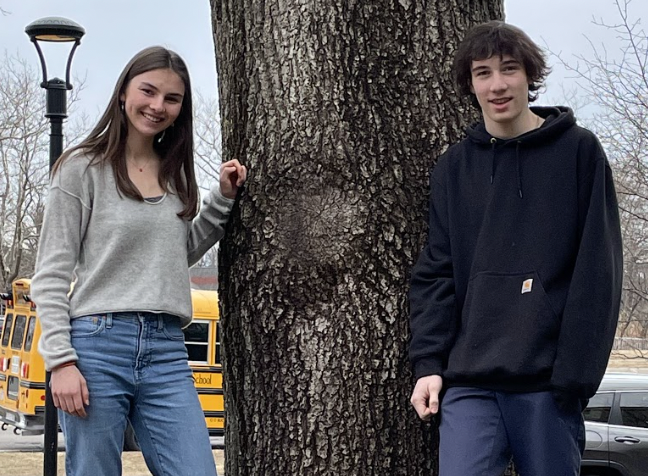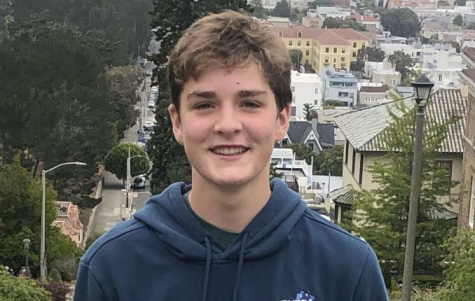Innovation grants inspire change from woodshop to treetops
March 2, 2022
How might we igKNIGHT ideas that disrupt, evolve, transform, and expand education at the school? This winter, 14 innovation proposals from faculty and students answered this question in applications for the new Innovation Grants offered by the Upper School (US) Teaching and Learning Office. Receiving a grant includes support from the US Teaching and Learning Office and funding to complete the intended proposal; the amount of money is not set until the endeavors begin.
The recipients of the inaugural grants included US Woodworking Teacher Anna Van Voorhis, who plans to transform part of the woodshed into a modern maker space; Graham Bateman, Christian Bateman (both ’23), David Min, and Dhruv Padmanabhan (both ’22), who plan to extend Boston COVID Tutoring’s reach across New England; Jeremy Altman and Arden Conine (both ’22), who plan to set up a weekend backpacking trip for US students this spring; and US Science Teacher and Bivouac Director David
Strodel ’78, who plans to extend Camp Marienfeld’s use to the school beyond the Bivouac program.
Mr. Strodel and other faculty have been brainstorming new uses for Marienfeld, the property where Bivouac is held, for over six years, he said, but the innovation grant is finally giving him the opportunity to make change.
“I’ve always felt the Marienfeld property is underutilized, and there are some definite needs such as compostable toilets instead of porta potties and shelters for severe weather,” Mr. Strodel said. His proposed physical changes to Marienfeld involve rebuilding the bunkhouse and infirmary and replacing the guides’ kitchen in a similar style to the White Mountain Huts.
“It would be enough indoor space to allow students who don’t get time surrounded by nature outside of Bivouac to come up in all seasons,” he said. “However, Bivouac should remain the experience we know it to be while opening opportunities for more of the community to participate equitably in its use.”
Mr. Strodel proposed weekend getaways throughout the year for US students: a second solo, of sorts. Affinity groups, clubs, and classes could use the bunkhouse to go overnight in the winter and simply be in nature, he said.
Arden and Jeremy proposed a similar outdoor idea: weekend winter ski-trips and spring hiking trips led by and for US students and faculty. The grant will fund transportation and lodging costs.
“Due to the high financial cost of most outdoor activities, many [US students] wouldn’t have access to these opportunities outside of school,” Jeremy said. “We believe the outdoors should be open to everybody and want to design and run trips that create equal access for all.”
After writing and submitting their applications, the seven student applicants participated in a one-hour discussion with members of the Teaching and Learning Office. Each applicant shared their innovation, and the whole group gave suggestions to improve the proposal.
“The innovation grants offered us the platform to write down our ideas and eventually get them into concrete trips through funding. The discussion [with the fellow grant applicants and Teaching and Learning Office] strengthened our ideas through outside opinions,” Arden said.
Chief Learning Officer Jed Lippard created the Innovation Grants because he believes members of the US community have innovative ideas but didn’t have an outlet for them previously, he said. Common themes in the proposals, like environmental justice and outdoor activities, gave the school needed feedback, he said.
The Teaching and Learning Office evaluated grants by looking at which ideas would bring the most-needed change to the school and which proposals would benefit most from the grant’s resources. The decision team had multiple discussions over the winter and one final discussion with all the applicants.
“Innovation doesn’t happen on an island; it takes the whole community. When we considered all the proposals, the commonalities among them implicate larger areas for change at the school,” Dr. Lippard said.
Alisa Ishii ’23, who worked with the Teaching and Learning Office to choose the grant recipients, said she valued watching each idea transform and expand through open conversations with the grant creators and the Teaching and Learning Office team.
“Each proposal ideator was so passionate about what they’re doing, and everyone around them was passionate about making the ideas a reality, so it was really productive since everyone’s working towards the same goal,” she said.
The school is headed in a direction where students and faculty, who are stakeholders on campus, can directly make impacts with these grants.
“Seeing students like Arden and Jeremy have strong passions outside of the classroom was really nice, especially since in our daily life at school, that passion rarely has an opportunity to come through,” Alisa said.
Applications for the Innovation Grants will continue with submission periods twice a year: in the spring with time to create the proposal over the summer and in the winter with time to create the proposal over winter break. The next applications will open soon after March Break.


